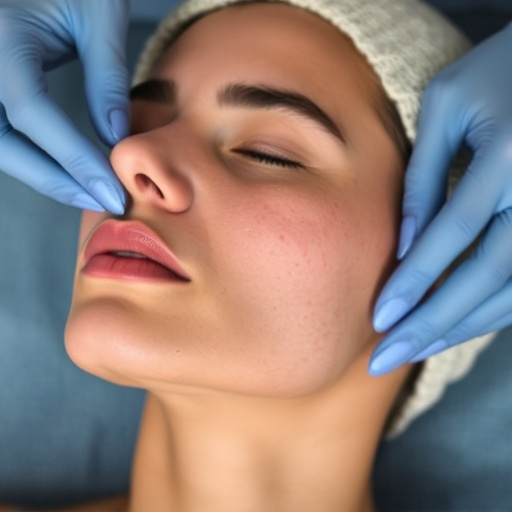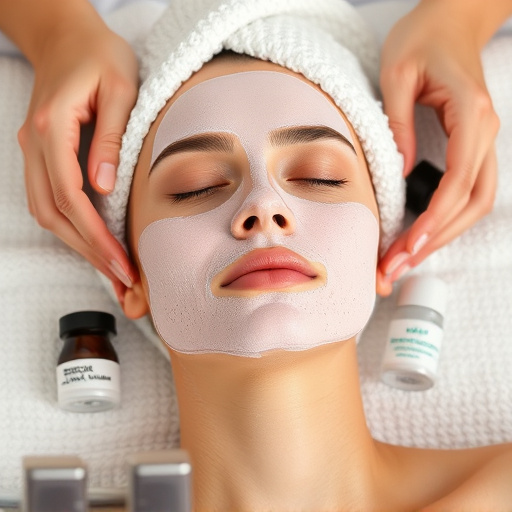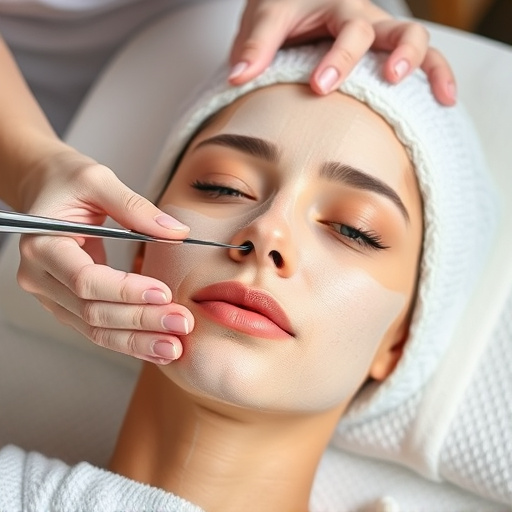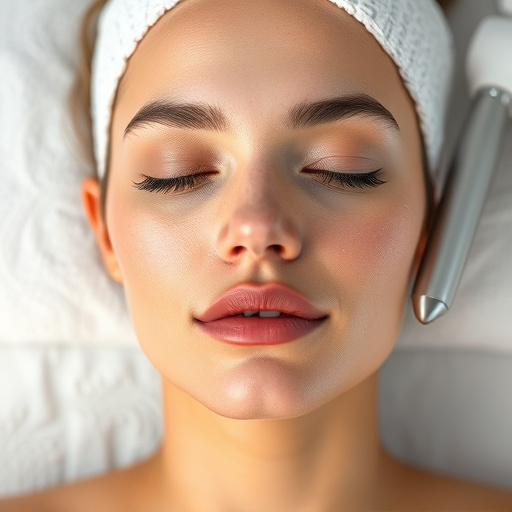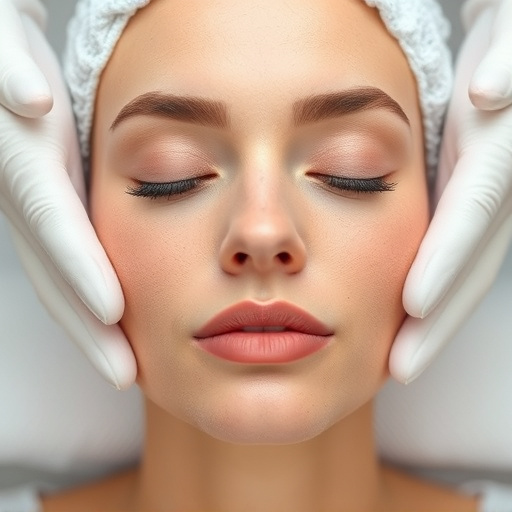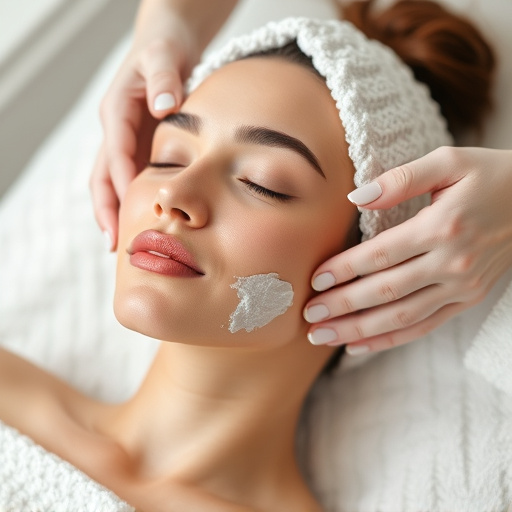Misdiagnosing chest acne as simple oil production or dirty skin can hinder effective treatment. Hormonal imbalances, medications, or irritants may be the root cause. Consulting a dermatologist is crucial to determine the actual trigger and receive appropriate chest acne therapy. Non-invasive solutions include chemical peels and pore refinement procedures. Understanding the unique pathophysiology of chest acne is key for tailored treatments addressing its multifaceted causes, including hormones, bacteria, and lifestyle factors like stress, diet, sleep, and clothing.
“Uncovering the path to clear skin begins with understanding—and avoiding—common pitfalls in chest acne treatment. Misdiagnosing the root cause, whether it’s hormonal, bacterial, or lifestyle-related, can lead to ineffective treatments. Over-the-counter products may offer temporary relief but often skip essential steps in a comprehensive skincare routine. Neglecting proper cleansing and moisturizing routines can exacerbate the issue. This article guides you through these mistakes, empowering you to navigate chest acne therapy with confidence.”
- Misdiagnosing the Cause
- – Understanding the difference between chest acne and other skin conditions
- – The role of hormones, bacteria, and lifestyle factors in chest acne
Misdiagnosing the Cause
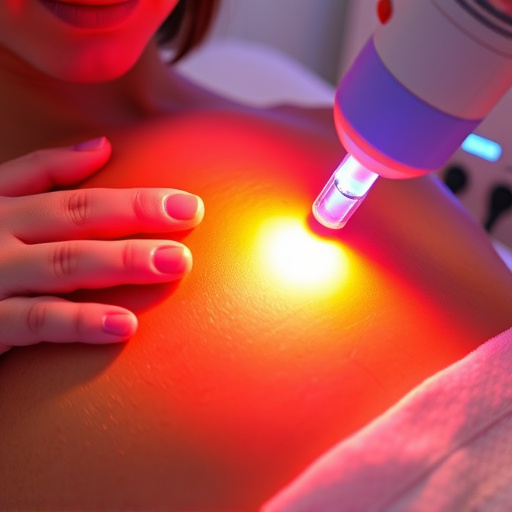
Misdiagnosing the cause of chest acne is a common mistake that can lead to ineffective treatment and prolonged skin issues. While it may seem straightforward, identifying the underlying factor contributing to the acne is crucial for successful chest acne therapy. Many people often assume that excessive oil production or dirty skin is the primary culprit, but this isn’t always the case. Chest acne could be a result of hormonal imbalances, certain medications, or even contact with irritants and allergens.
When considering chest acne therapy, it’s essential to consult a dermatologist who can thoroughly evaluate your skin and determine the root cause. They might recommend non-surgical treatments like chemical peels or pore refinement procedures based on their diagnosis. These targeted approaches can help unclog pores, reduce inflammation, and promote healthier skin without unnecessary invasiveness.
– Understanding the difference between chest acne and other skin conditions
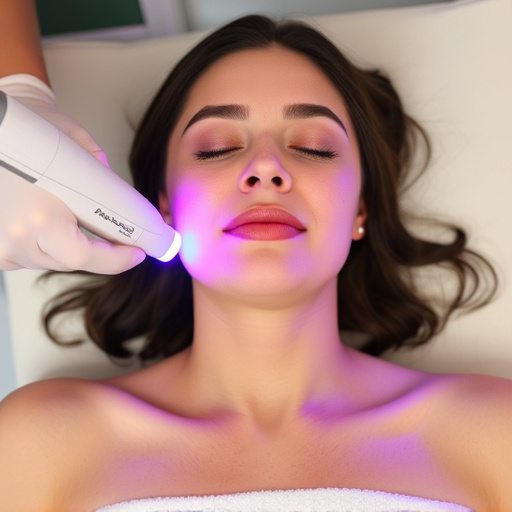
Chest acne is a distinct condition that requires specialized care, often different from traditional facial acne treatments. Unlike regular acne that primarily affects the face and scalp, chest acne presents as inflamed bumps and lesions on the chest area, sometimes extending to the back and shoulders. This unique location makes it prone to irritation from clothing and other environmental factors, making effective chest acne therapy crucial for management.
Misdiagnosing chest acne as other skin conditions is a common mistake. Conditions like eczema or psoriasis can share similar symptoms, but they require tailored treatments. For instance, customized facials designed for chest acne may not address the underlying causes of eczema. Moreover, understanding the specific pathophysiology of chest acne aids in selecting appropriate procedures such as chemical peels, which can help exfoliate and clear the skin without further complications.
– The role of hormones, bacteria, and lifestyle factors in chest acne
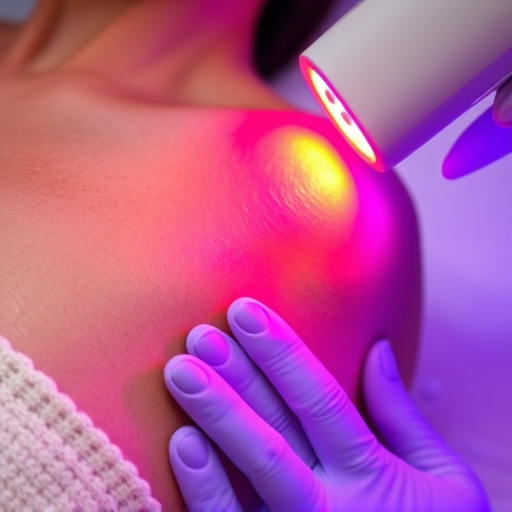
Chest acne, often a persistent and frustrating condition, is influenced by a complex interplay of hormones, bacteria, and lifestyle factors. Hormonal fluctuations, particularly during puberty or due to hormonal imbalances in adults, can trigger increased sebum production, leading to blocked pores and acne breakouts. The skin’s natural oil, when combined with dead skin cells and bacteria, forms a plug within the pore, resulting in inflammation and the characteristic red, inflamed bumps of chest acne.
Bacterial colonization plays a significant role as well. Propionibacterium acnes (P. acnes), a common skin bacterium, thrives in the warm, humid environment created by excessive sebum. This bacteria breaks down oil, producing inflammatory compounds that aggravate the skin, leading to further redness and swelling. Moreover, lifestyle choices can exacerbate chest acne. Stress, poor diet, inadequate sleep, and even clothing choices can contribute to skin inflammation and hormonal imbalances, making it crucial to address these factors alongside targeted chest acne therapy for effective long-term management and improved skin health.
When navigating the chest acne therapy process, it’s essential to avoid common pitfalls. Misdiagnosing the cause is a significant mistake, as chest acne has unique characteristics and often stems from hormonal imbalances, bacterial infections, or lifestyle factors. By understanding these underlying elements, individuals can ensure more effective treatment and prevent future outbreaks. Through proper knowledge and professional guidance, one can embark on a journey to clear and healthy skin, transforming their chest’s appearance and boosting confidence.





